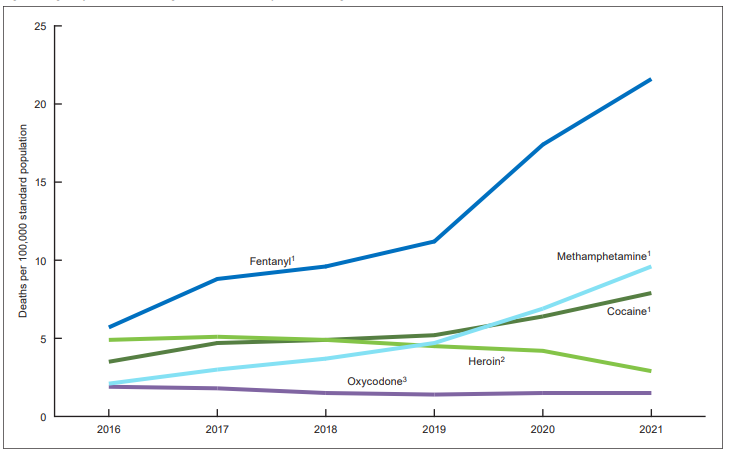DEA Plans Further Cuts in Oxycodone Supply
/By Pat Anson
The Drug Enforcement Administration is planning to cut the supply of oxycodone by over 6% in 2026, along with marginal reductions in the supply of hydrocodone, morphine and other Schedule II opioids.
If the DEA’s plans are finalized after a short public comment period, it would be the 10th consecutive year the opioid supply has been reduced in the United States.
The DEA announced its plans Friday in the Federal Register. Under the Controlled Substances Act (CSA), the agency has broad legal authority to set annual aggregate production quotas (APQs) for drug makers – in effect telling them the amount of Schedule I and Schedule II chemicals and medications they can produce.
The DEA is planning another round of cuts in the Schedule II opioid supply because it continues to see declines in the “medical usage” of opioids – an average decrease of 10.5% in 2024 alone.
It’s important to note that medical usage is different from “medical need.” Doctors simply aren’t prescribing as many opioids as they used to, so while the need for pain relief hasn’t changed and may have even increased due a spike in rates of chronic pain, the number of prescriptions written for opioids has declined.
DEA expects that trend to continue, based in part on data from IQVIA, a private company that tracks prescription drug use. The agency is also seeing fewer requests from drug manufacturers to make oxycodone.
“DEA projects that the medical usage of these controlled substances will continue to decline in 2026 based on a review of domestic usage data from IQVIA,” DEA said in its Federal Register notice. “Additionally, DEA has observed a significant decline in requests for product development quotas to support manufacturing towards FDA approval of drug products containing oxycodone.”
DEA Opioid Production Cuts Planned for 2026
Oxycodone 6.24% decrease
Morphine 0.559% decrease
Hydrocodone 0.529% decrease
Hydromorphone 0.109% decrease
Fentanyl 0.014% decrease
Codeine 0.002% decrease
From year-to-year, the cuts may not appear significant. But over the past decade, there has been an historic decline in the nation’s opioid supply. If its current plan is adopted, DEA will have cut the supply of hydrocodone by 72.9% and oxycodone by 70.6% since 2014.
Some of the decline in “medical usage” is driven by scarcity. For example, Endo Pharmaceuticals recently informed the FDA it discontinued production of 2.5, 5, 7.5 and 10 mg Percocet (oxycodone/acetaminophen) tablets. Major Pharmaceuticals stopped making oxycodone/acetaminophen tablets a few months ago. And Teva Pharmaceuticals, a large generic drug maker, stopped making immediate-release oxycodone in 2023.
The FDA does not currently list oxycodone products on its drug shortage database, but the American Society of Health-System Pharmacists (ASHP) has since 2023. Limited supplies of oxycodone are available from some manufacturers, according to ASHP, while others have the medications on back order.
Hydrocodone/acetaminophen tablets have also been on the ASHP’s shortage list (but not on the FDA’s) since 2023. Major and Camber Pharmaceuticals have both stopped making them.
Health Canada reported a nationwide shortage of oxycodone/acetaminophen combinations over the summer, a shortage that persists today but is expected to resolve soon.
Why would the DEA be reducing production quotas for opioids that are already in short supply?
DEA sets its APQs after consulting with states willing to share their prescription drug data, as well as federal agencies like Health and Human Services and the Food and Drug Administration.
DEA also asked for input from the Centers for Disease Control and Prevention, an agency in turmoil after several months of layoffs, budget cuts and leadership changes. A response to that request “was inadvertently delayed” at CDC, but DEA says it will take it under consideration when or if it ever arrives.
“DEA remains committed to monitoring drug shortages, limiting their impact, and resolving them as quickly as possible. DEA continues to seek additional information that will assist in accurately forecasting domestic medical usage and export requirements of schedule I or II substances,” DEA said.
Unlike previous years, when there was a 30-day period for public comments on the DEA’s quota proposal, the agency is only allowing about two weeks. You can leave a comment here, but it must be posted no later than December 15. DEA did not explain why it was reducing the amount of time the public can comment.











